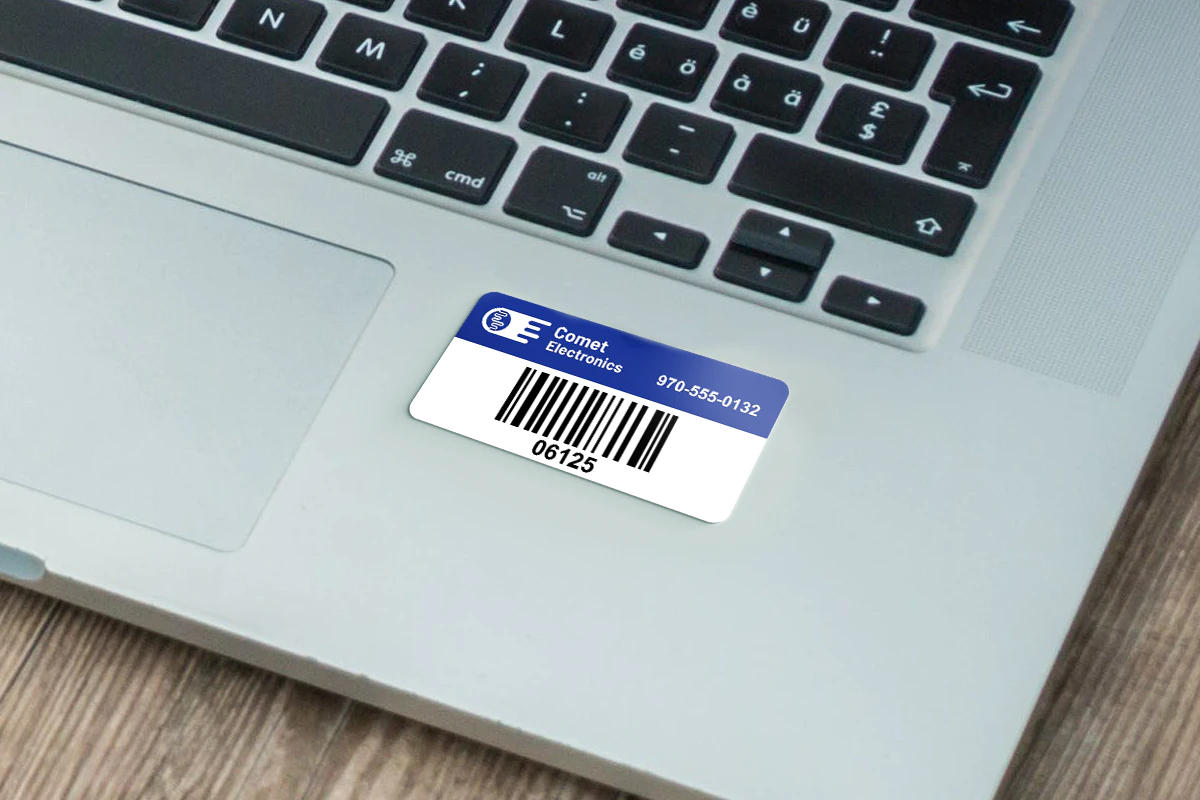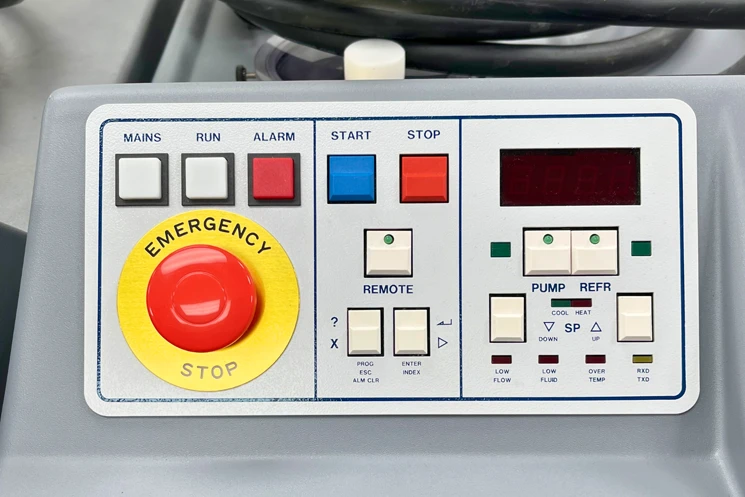Variable data labels allow businesses to print labels with unique, changing information on each one. Unlike traditional static labels, these dynamic labels adapt to the specific needs of industries like asset tracking, inventory management, and personalized product packaging. To dive deeper into the ins and outs of variable data printing, check out our detailed guide: Variable Data Printing: What, How, Why.
For example, a single batch of labels can include different serial numbers, barcodes, or even customer-specific details, saving time and improving accuracy.
Whether you’re labeling equipment, managing inventory, or creating custom designs for branding, variable data labels offer unmatched flexibility and efficiency.
What Are Variable Data Labels?
Variable data labels are labels that contain unique information on each one, such as barcodes, asset tags, product IDs, or personalized messages. These labels are created using variable data printing, where the content (like text, numbers, or graphics) changes dynamically for each label based on the data provided.
Key Features of Variable Data Labels
- Customizable Content: Includes unique data like barcodes, QR codes, or personalized messages.
- Efficient Labeling: Designed for high-speed printing to handle large quantities quickly.
- Versatile Formats: Works with various materials and sizes for different labeling needs.
How They Differ from Static Labels
Static labels are identical across a batch—they don’t change. Variable data labels, on the other hand, are tailored for specific purposes, making them ideal for industries requiring real-time data updates, personalized branding, or asset tracking solutions.
The Benefits of Using Variable Data Labels
Variable data labels offer significant advantages, particularly for businesses managing large volumes of assets or products. Here’s how they can improve your operations:
Increased Efficiency in Asset Tracking
Tracking equipment or inventory is easier with unique asset tags that include serial numbers, barcodes, or RFID data. These labels streamline workflows by enabling real-time tracking and automated updates.
Improved Accuracy for Inventory Management
Using inventory labels for equipment or stock items reduces human error. Variable data ensures every item has a unique identifier, which simplifies audits and prevents duplication.
Customization for Personalization and Branding
Variable data labels allow for personalized packaging, such as including customer names or special offers on products. This boosts customer engagement and reinforces brand loyalty.
Applications of Variable Data Labels
The versatility of variable data labels makes them indispensable in several industries. Here are a few practical uses:
Asset Tags and Their Role in Equipment Tracking
Unique asset tags created with variable data labels help businesses monitor and maintain their equipment. By including serial numbers, barcodes, or QR codes, companies can track and locate assets more effectively.
Inventory Labels for Streamlined Management
Warehouse and logistics operations rely on variable data labels to keep inventory organized. These labels help workers quickly scan items and update inventory systems, saving time and improving accuracy.
Product and Packaging Labels for Custom Designs
Manufacturers can use variable data labels to create dynamic product packaging. For example, labels may include batch numbers, expiration dates, or personalized customer information, making them ideal for food, beverage, and retail industries.
How to Create Variable Data Labels
Creating effective variable data labels requires the right tools and planning. Here’s how to get started:
1. Choosing the Right Software for Variable Data Printing
Look for software that supports variable data printing, such as BarTender, NiceLabel, or Zebra Designer. These programs allow you to connect data sources and create dynamic labels.
2. Integrating Data Sources for Automated Labeling
Variable data labels pull information from databases or spreadsheets. Integrating these sources ensures that each label contains accurate, unique details without manual input.
3. Tips for Quality and Consistency in Variable Data Labels
- Use high-quality materials for durability and readability.
- Test your design on a small batch before full production.
- Double-check your data for accuracy to avoid errors.
Best Uses for Variable Data Labels
To maximize the benefits of variable data labels, follow these practical tips:
Maintaining Data Accuracy and Consistency
Always verify your data before printing. Incorrect or inconsistent data can lead to delays and wasted materials.
Regular Updates for Asset and Inventory Labels
For industries like asset tracking or inventory management, regularly updating label data ensures your system remains accurate and reliable.
Optimizing Label Design for Readability
Keep the design clean and simple. Labels should be easy to scan or read, especially when they include barcodes or QR codes.
Variable Data Labels for Equipment and Asset Tracking
Why Asset Tags Are Essential for Equipment Management
Asset tags made with variable data labels help businesses track and manage valuable tools and equipment. These tags provide location data, maintenance schedules, and ownership details, simplifying asset management.
How Variable Data Labels Improve Efficiency in Asset Management
By including unique identifiers like barcodes or RFID data, variable data labels allow businesses to monitor assets in real time, reducing downtime and improving accountability.
Future Trends in Variable Data Labeling
As technology advances, variable data labeling is becoming even more dynamic and efficient.
Automation in Variable Data Labels
Automation is being used to streamline label design and production, reducing manual errors and speeding up workflows.
Eco-Friendly Materials for Sustainable Labeling
With the growing demand for sustainability, many companies are adopting recyclable or biodegradable materials for variable data labels to reduce environmental impact.
Variable Data Labels FAQs
Variable data labels are dynamic labels with unique, changing content on each one. Examples include barcodes, serial numbers, or personalized messages.
Static labels are identical, while variable data labels include unique information for each item, making them more flexible and efficient for industries like inventory management and asset tracking.
Industries like manufacturing, warehousing, logistics, retail, and asset tracking benefit the most due to their need for dynamic, adaptable labeling solutions.
Yes, with the right software and database integration, you can create variable data labels tailored to your needs.
Variable data labels are used to create asset tags with unique serial numbers or barcodes, helping businesses track and manage equipment efficiently.
You’ll need software for variable data printing, a compatible printer, and a data source such as a spreadsheet or database.



